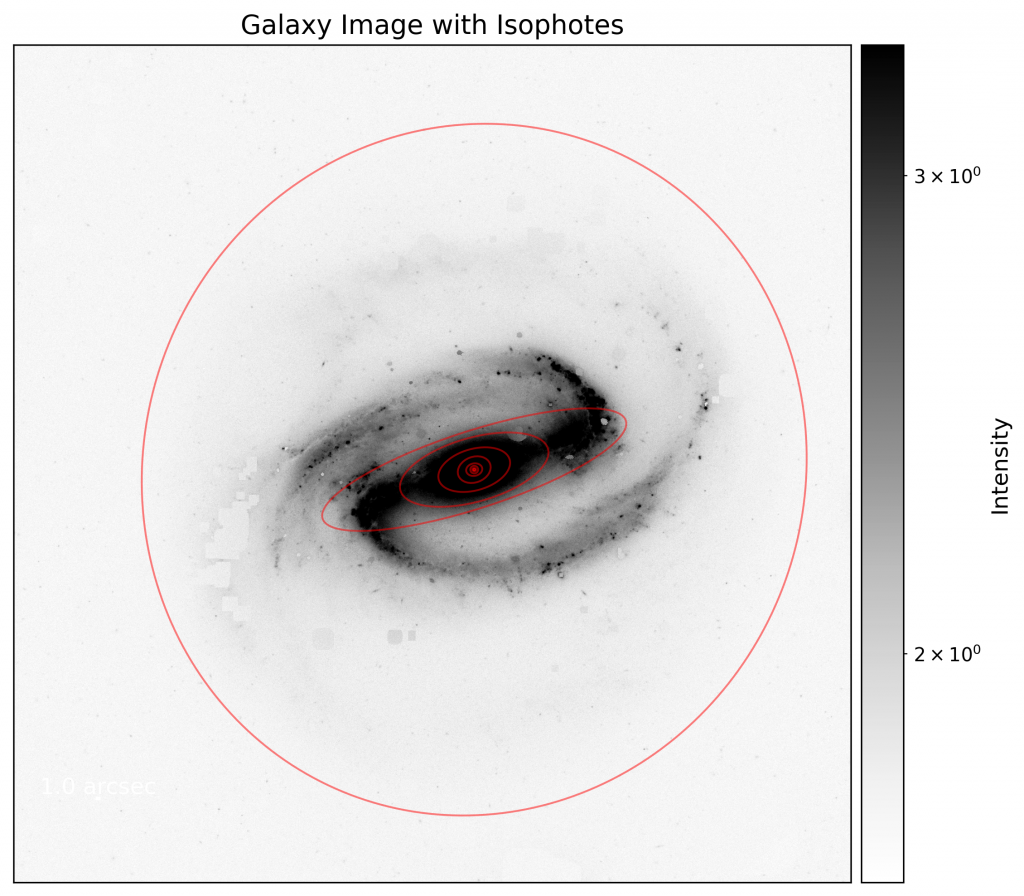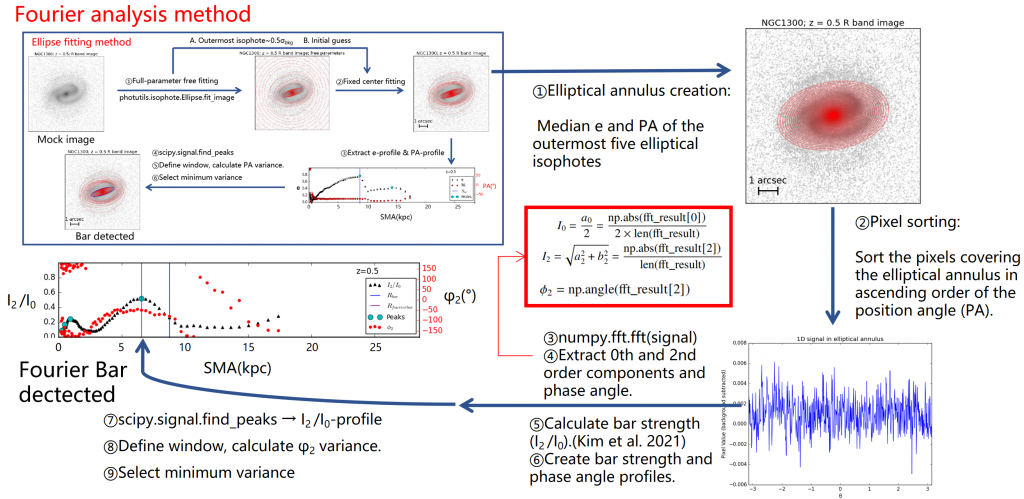1D image analysis
Core Concept of 1D Analysis
1D image analysis focuses on extracting structural properties of galaxies along a single spatial dimension—the semi-major axis (SMA) of elliptical isophotes. Instead of modeling the full 2D light distribution, it measures parameters (e.g., surface brightness, ellipticity) at successive SMA positions, generating radial profiles that reveal morphological transitions. The term “1D” arises because results are visualized as curves with SMA as the independent axis (e.g., ellipticity vs. SMA), collapsing complex 2D structures into analyzable trends.
Isophote Fitting
Basic Principle
Iteratively fits concentric ellipses to regions of constant surface brightness. Each ellipse is defined by:
- Ellipticity (e=1−minor axis/major axis)
- Position Angle (orientation on the sky)
- Center Coordinates (fixed at galactic nucleus)
Key Operations
- Radial Sampling: Progressively analyzes ellipses from galaxy center outward, with SMA increasing in logarithmic steps.
- Profile Generation: Compiles ellipticity, position angle, and intensity measurements into SMA-dependent profiles.

Fourier Analysis
Basic Principle
Quantifies azimuthal brightness variations by decomposing light distribution into harmonic modes. The dominant m=2
mode signals bar or spiral arm structures.
Key Operations
- Pixel sorting: To get the signal for FFT in each SMA.
- Mode Extraction:
- Computes Fourier coefficients for each SMA bin.
- Normalizes m=2 amplitude by the axisymmetric component (I2/I0) to quantify bar strength.
- Phase Tracking: Monitors angular alignment of the m=2 pattern to distinguish coherent structures from noise.

Why “1D”?
Both methods analyze galaxy light distribution along the semi-major axis, collapsing 2D images into:
- Ellipticity Profiles: Peaks indicate bar edges or disk transitions.
- Fourier Amplitude Profiles: I2/I0 peaks reveal symmetry strengths.
- Position Angle Profiles: Stable angles mark ordered structures.
By reducing dimensionality, 1D analysis enables efficient processing of large datasets while preserving critical structural information.
Practical Applications
- Morphological Classification: Identify bars through profile features.
- Redshift Evolution: Track structural changes (e.g. bar fraction) across cosmic time.
- Survey Science: Rapidly analyze thousands of galaxies in large-scale surveys like SDSS or JWST CEERS.
This approach balances simplicity and physical interpretability.
发表回复